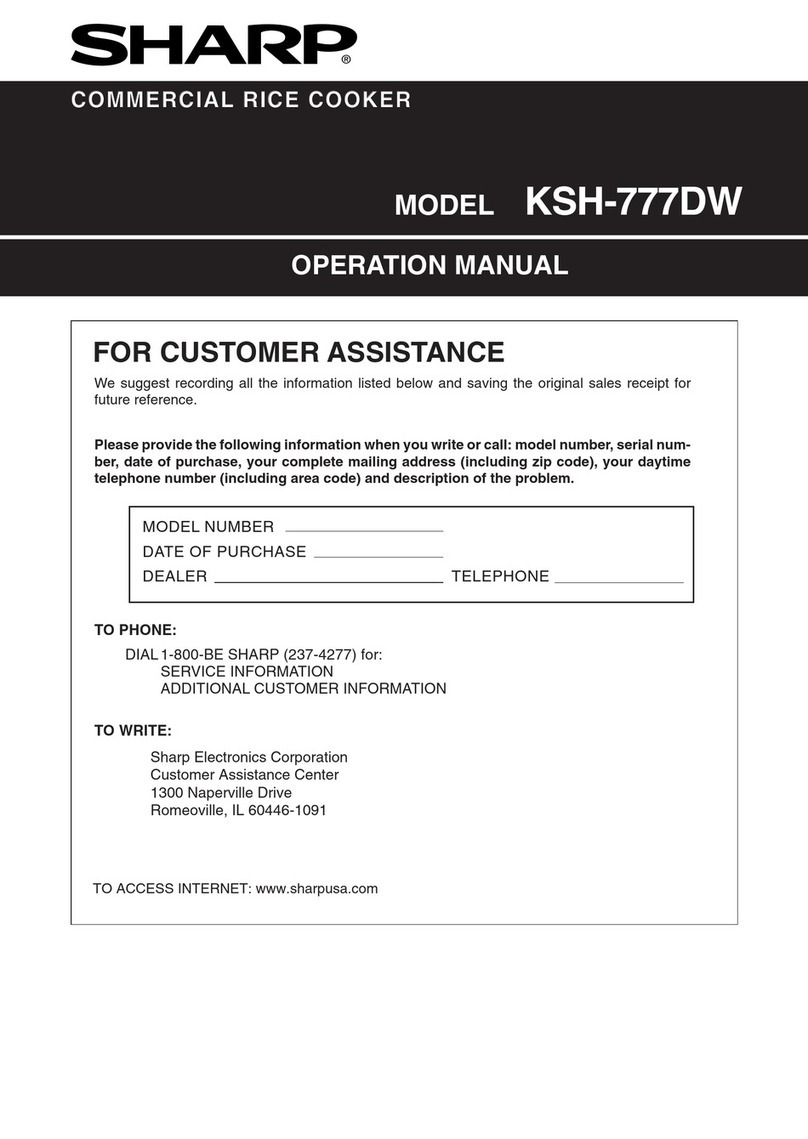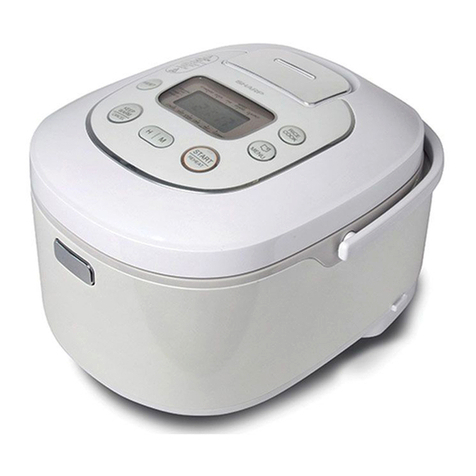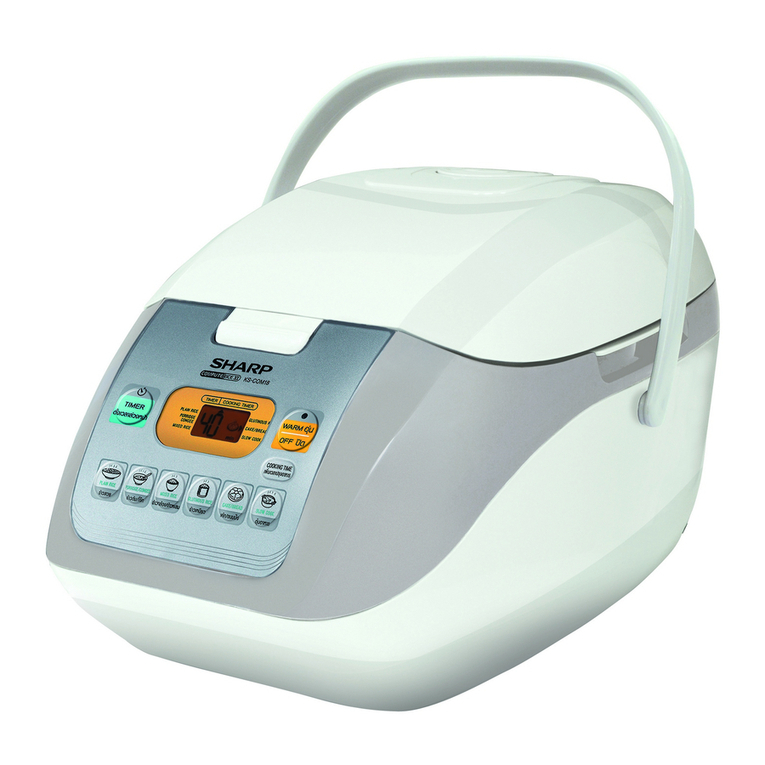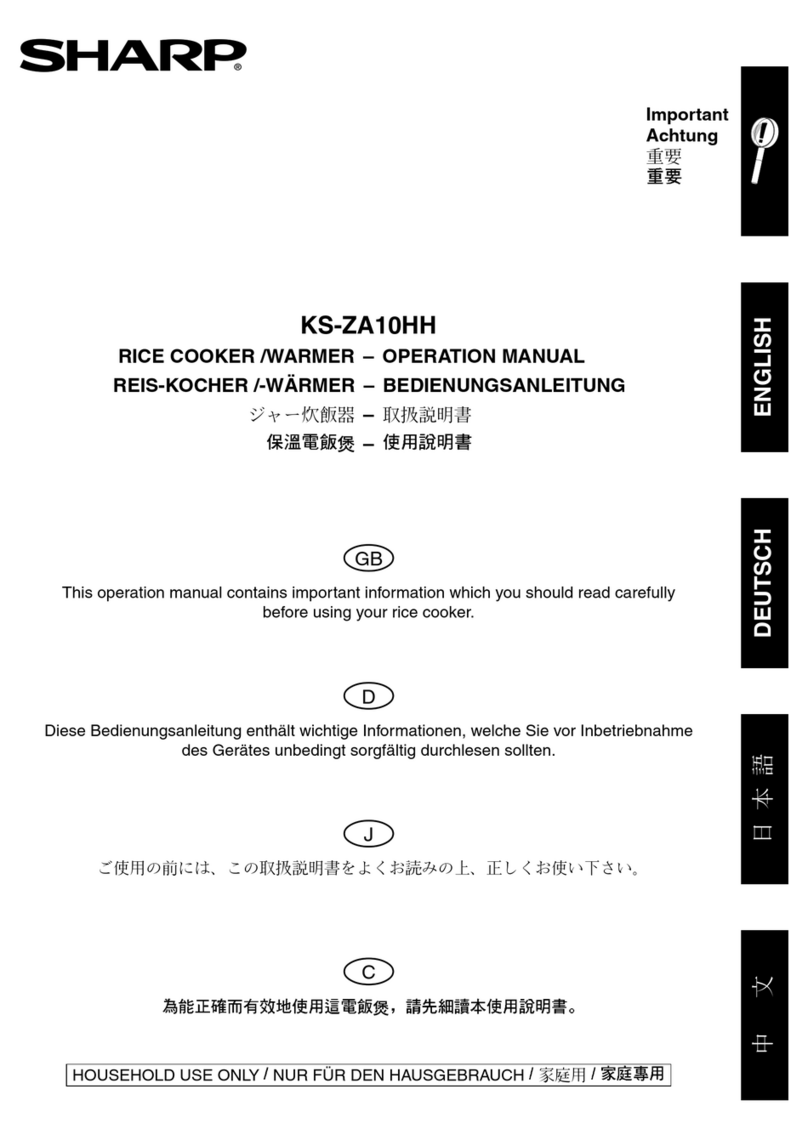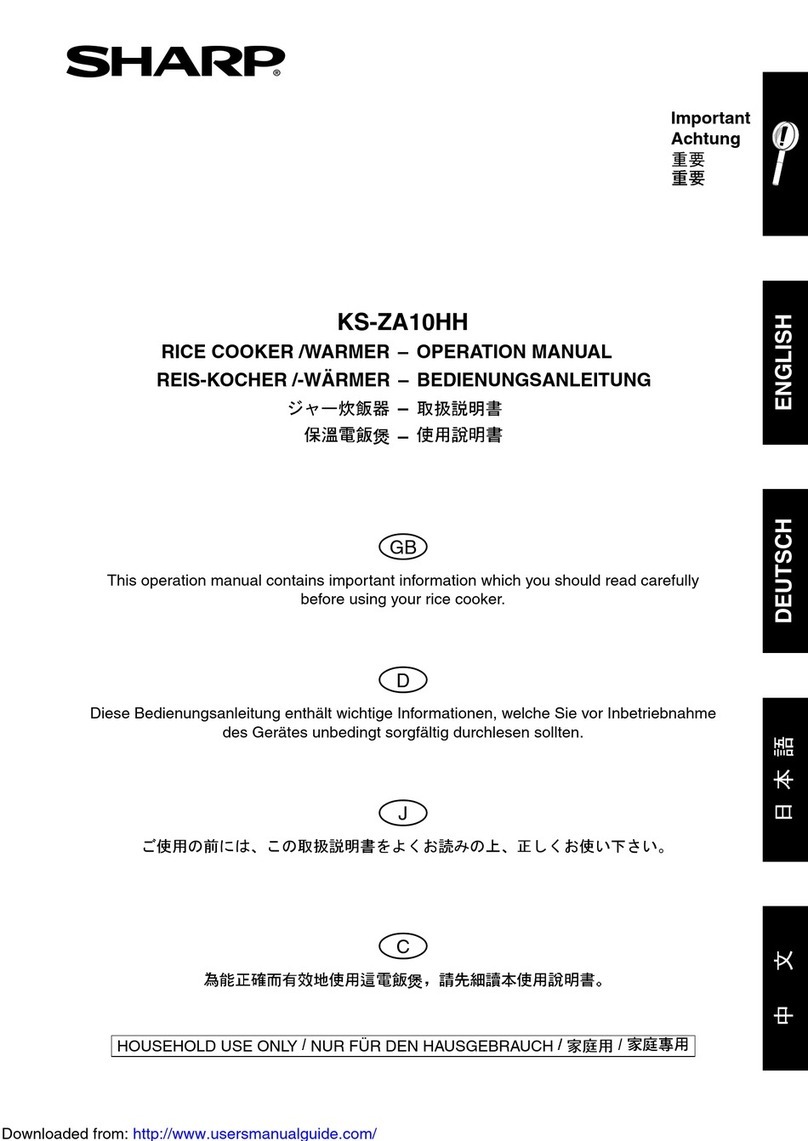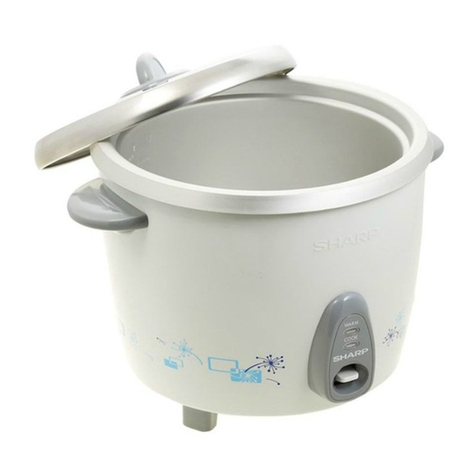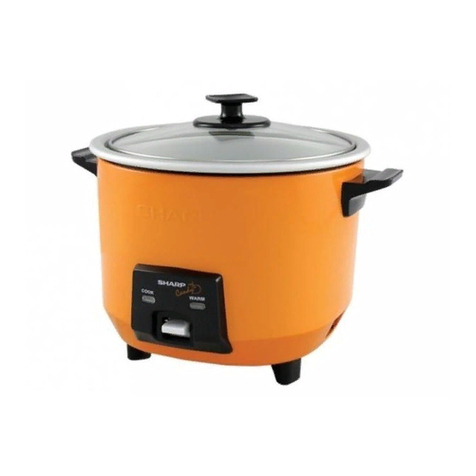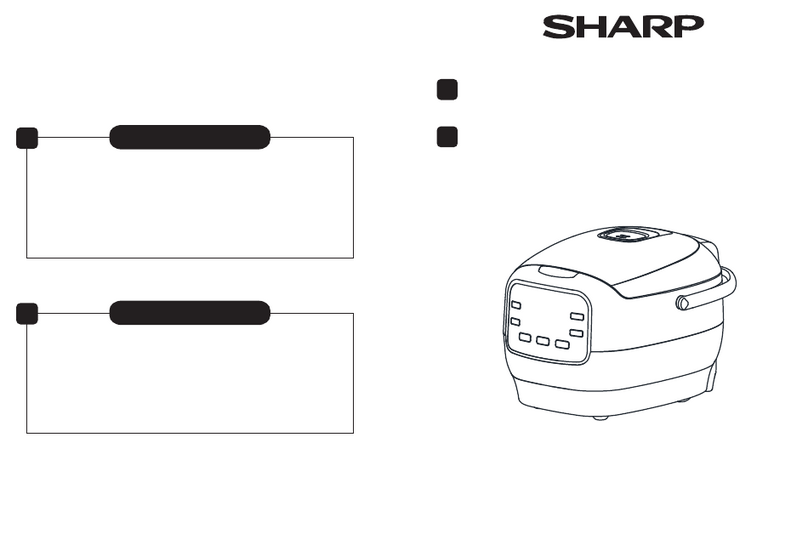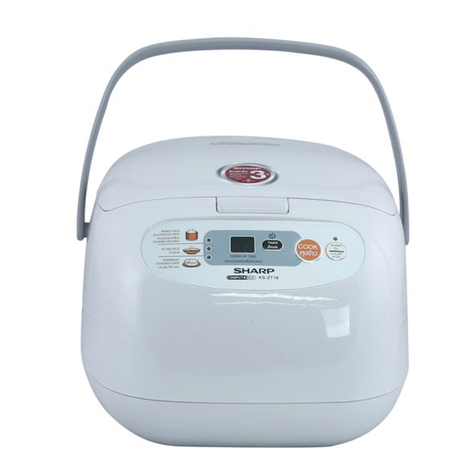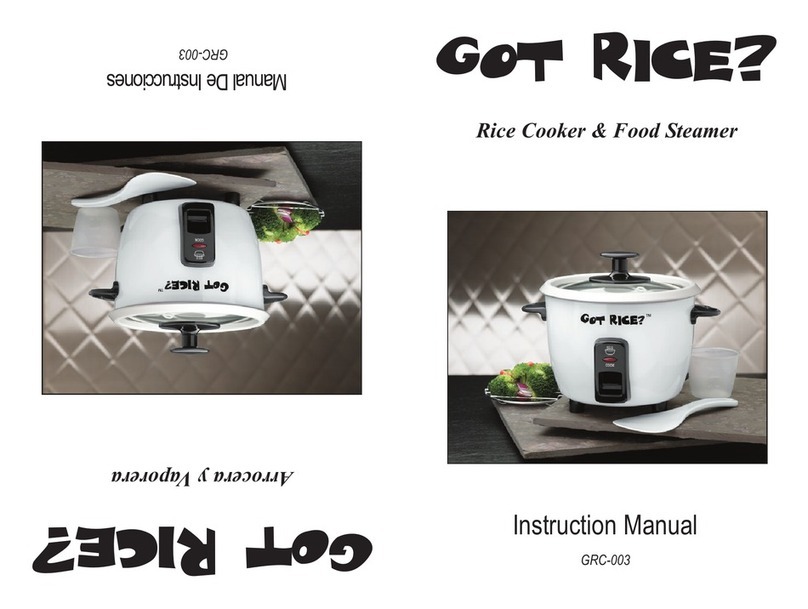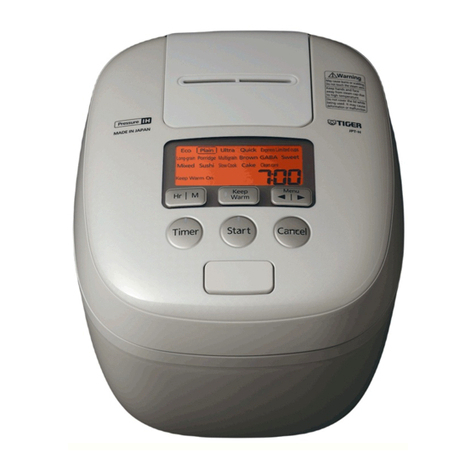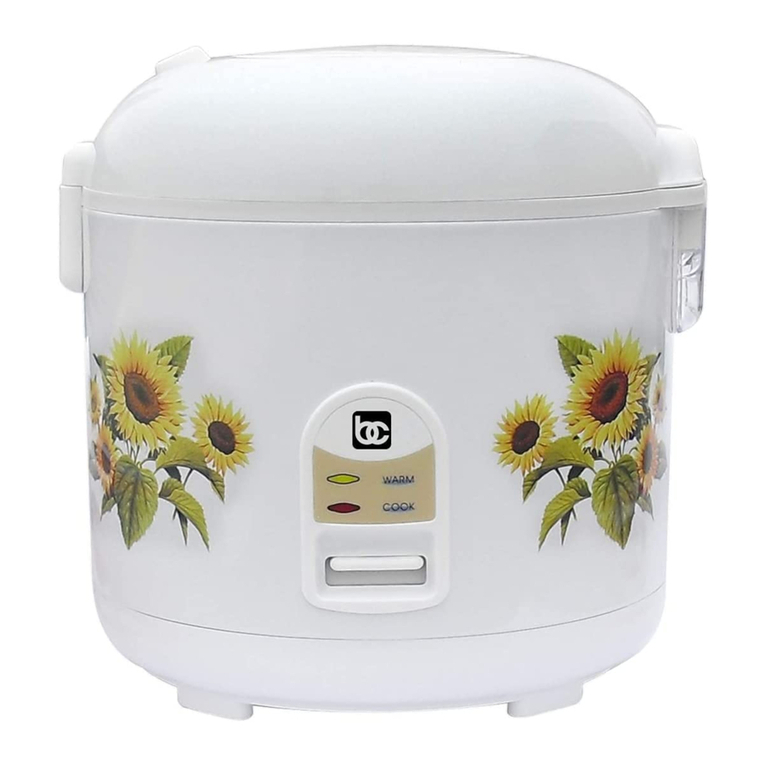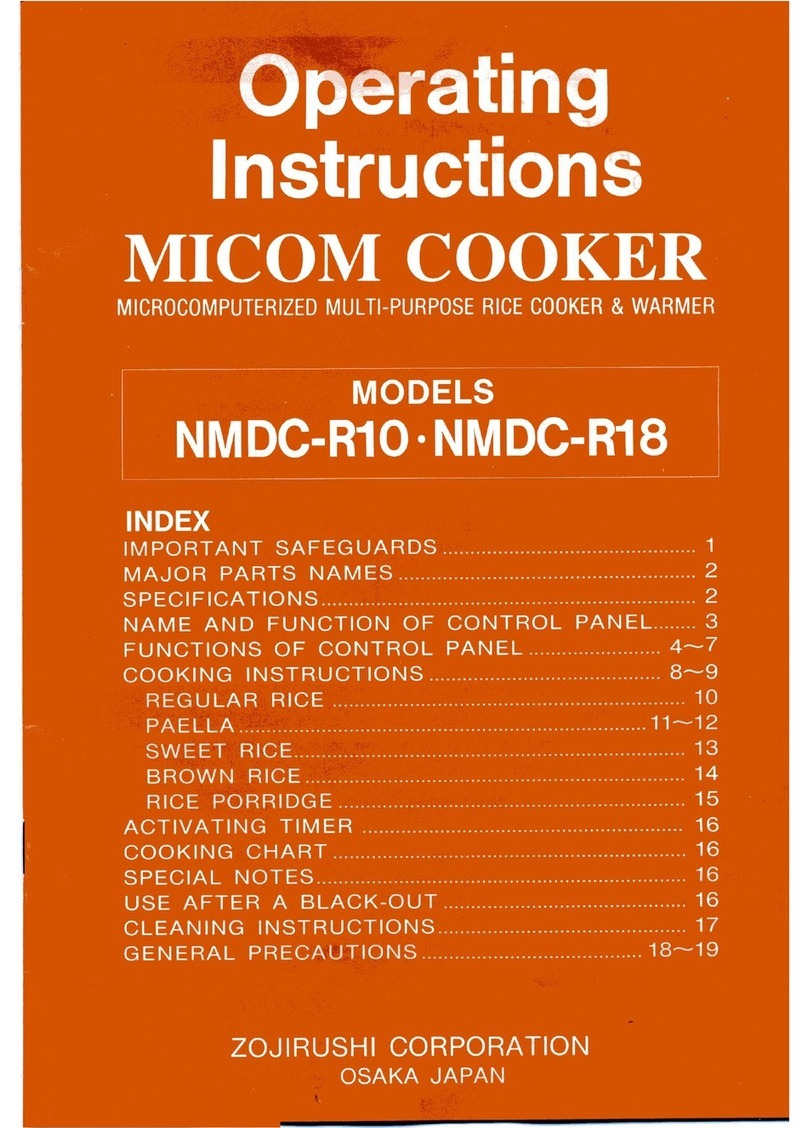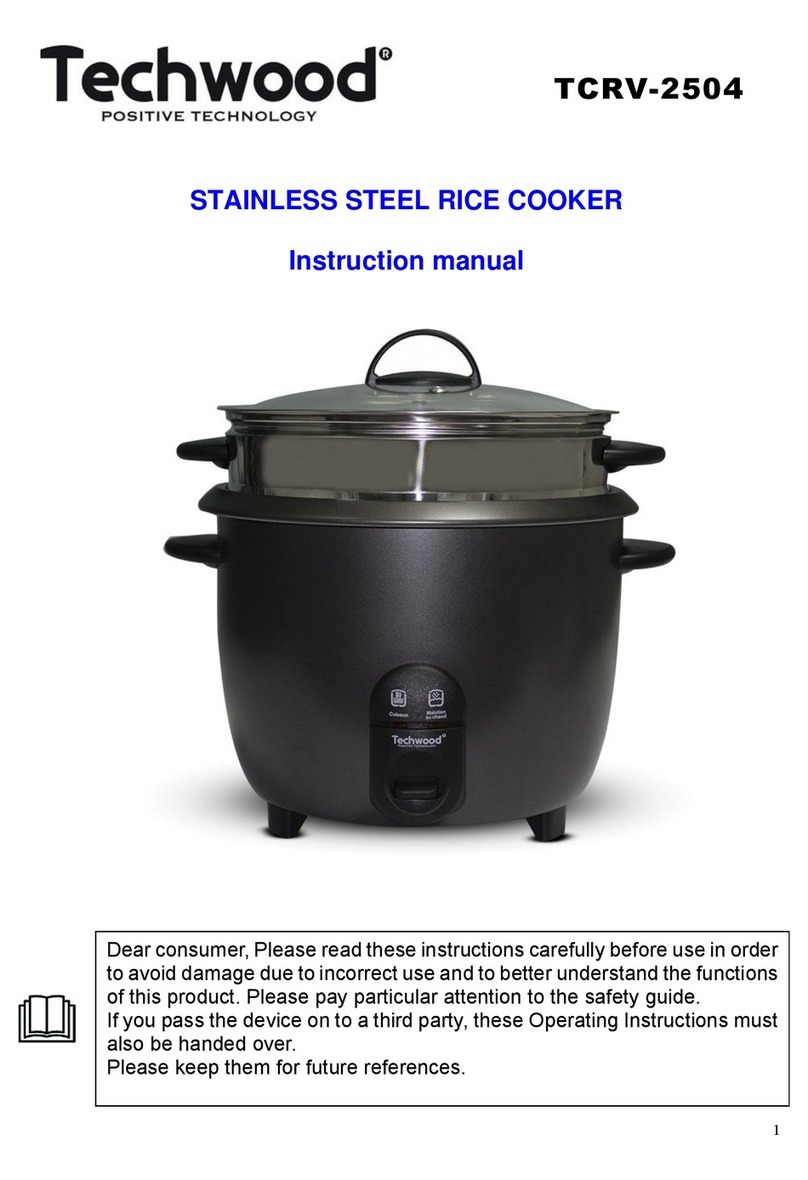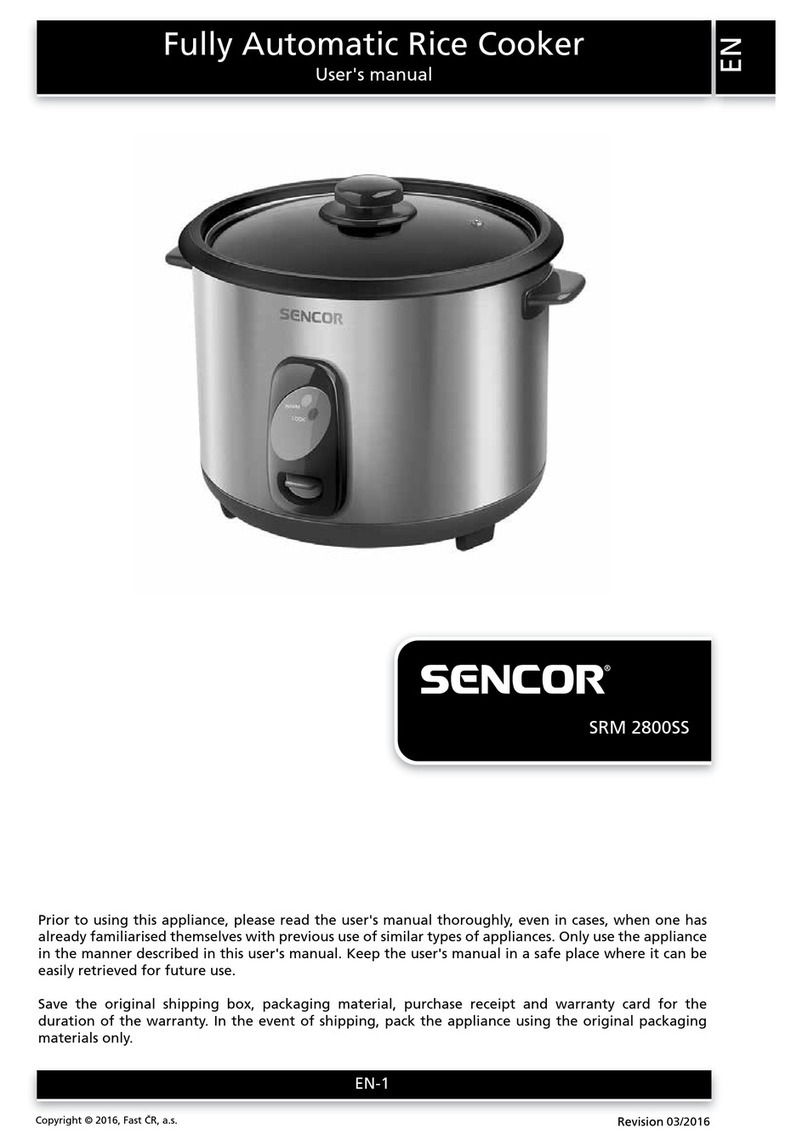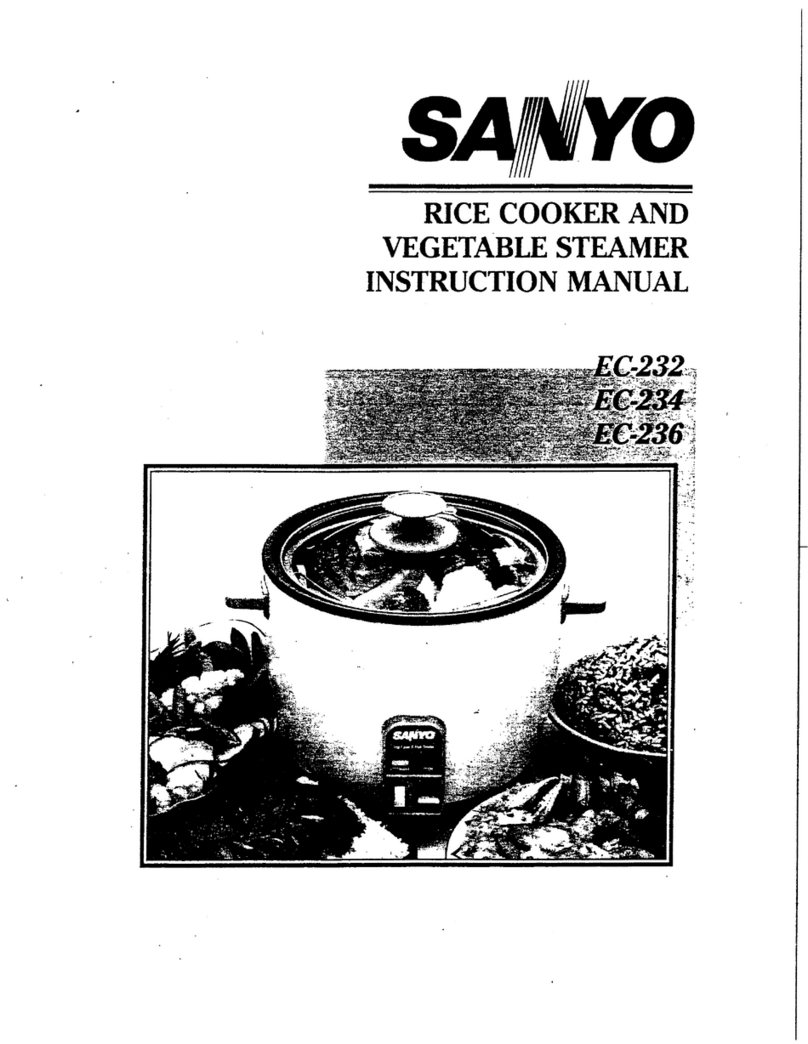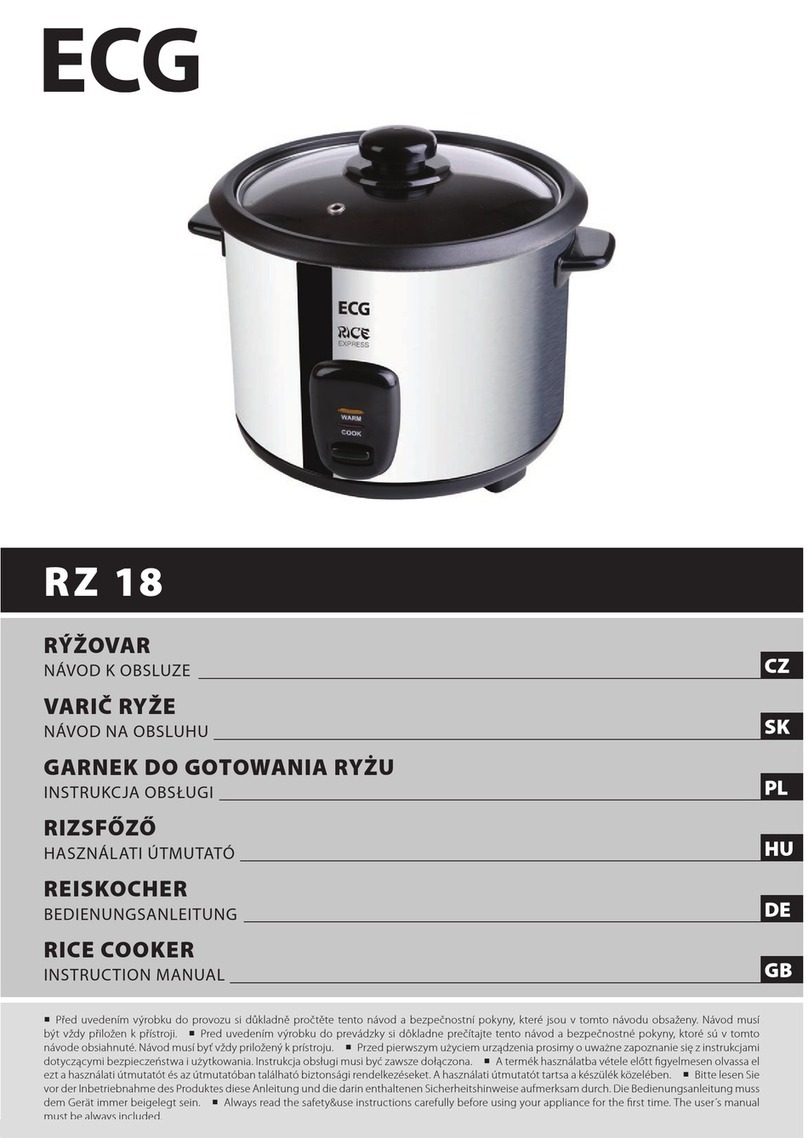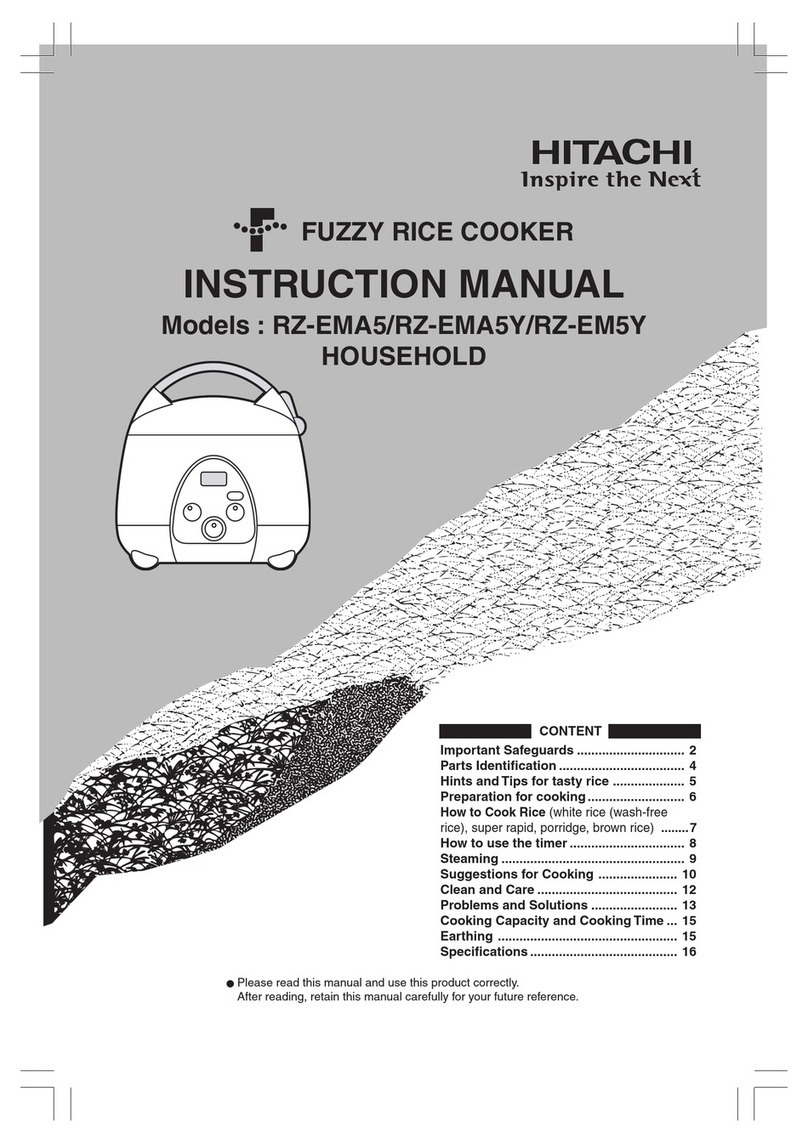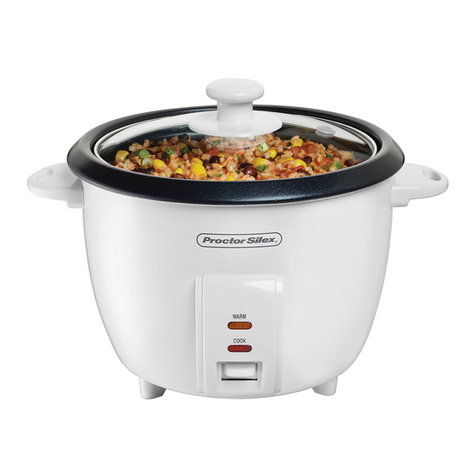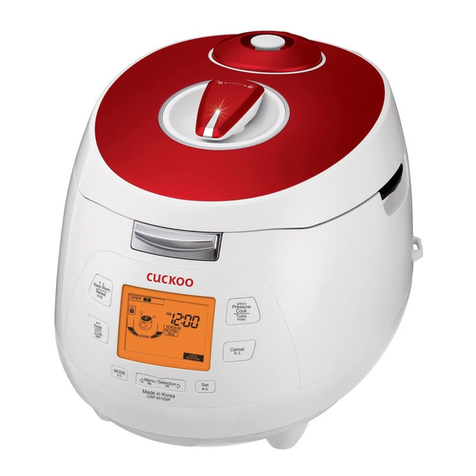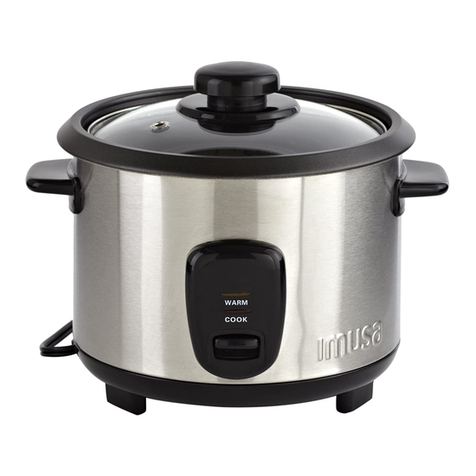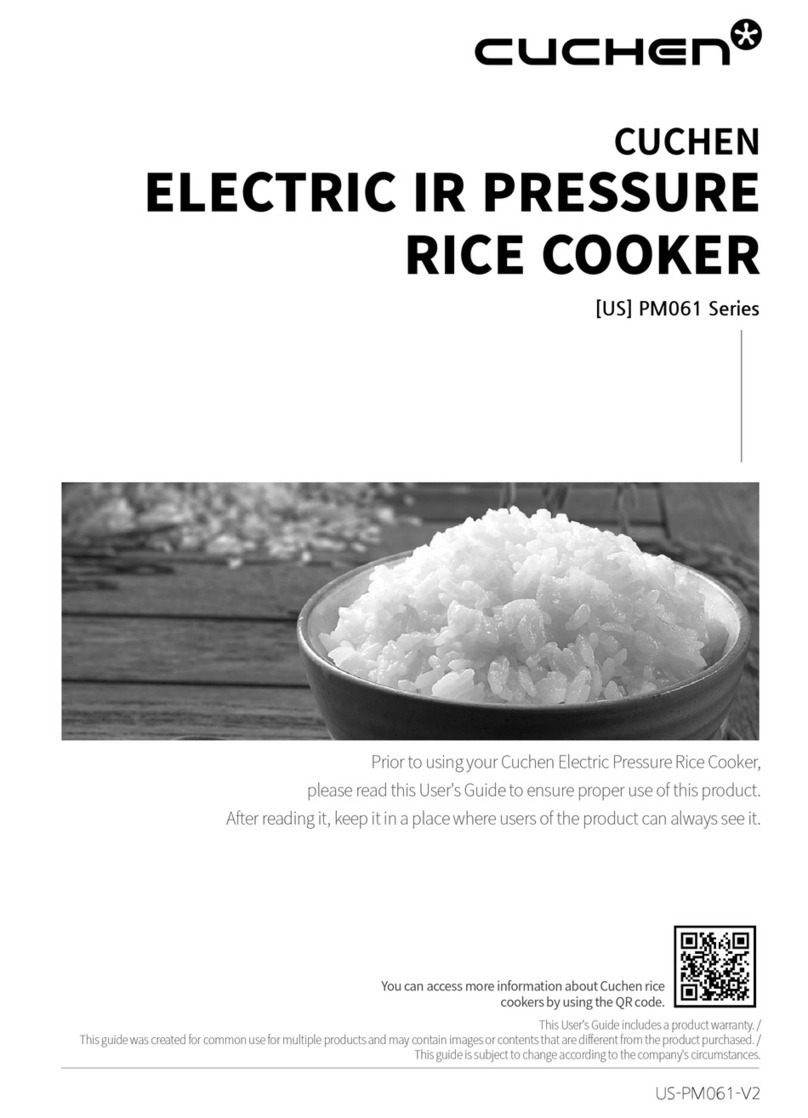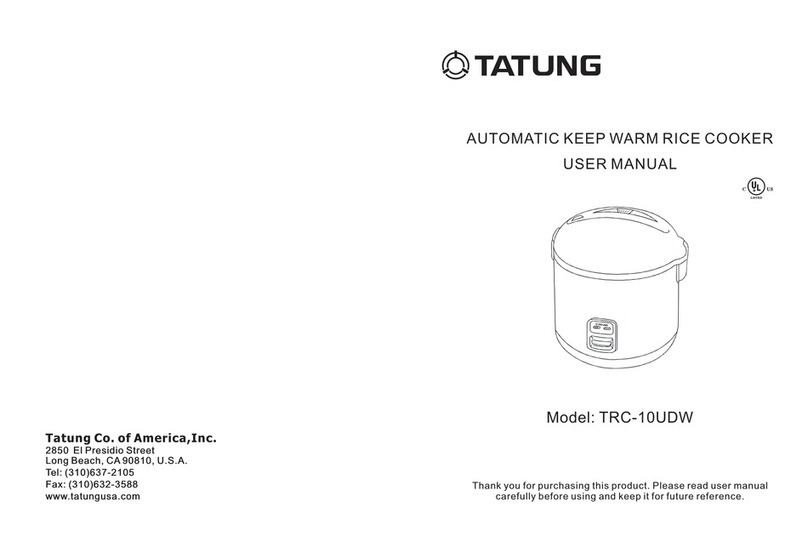
1. Place of use
To prevent fire or shock hazard do not place unit on or near heat sources such as a gas or electric oven
or grill.Also, do not use near water, for example near a kitchen sink, swimming pool, in a wet basement
and the like.
Do not use the rice cooker within 1 m of TV or radio to prevent the interference.
2. How to handle before use
Never overhaul for repair.
The electrical requirements are a 220V 50Hz, a.c. only protected electrical supply.
It is recommended that a separate circuit serving only this appliance be provided.
Never immerse the rice cooker in water or splash water on the unit.
There is a risk of electric shock.
Do not allow children to operate.
When you carry the rice cooker, use the handle with the lid close.
Never carry it by using of the inner pot holders projecting on both sides of the closed cooker.
Use the plastic spoon provided as accessory.
Forporridgeuseaplastic or wooden deep plastic spoon available on the market.
3. How to use it
(1) Before cooking
Do not use the inner pot for washing rice.
Wash rice quickly and thoroughly.
Insufficient washing will cause scorching and odor.
Use clean, clear water.
Do not use any inner pot other than the exclusive one.
The water level marking is a standard guide and may be adjusted slightly depending on the kind of
rice or your liking. Remember that adding too much water may cause boiling over.
Carefully align marks when replacing the steam cap in the lid.
Foreign matter adhered to the outside of the inner pot, heater plate and thermistor plate must be
washed off before use. If not, it may cause inadequate cooking or a damage of the rice cooker.
Rice with ingredients containing seasonings should not be cooked by using delay start setting.
Because the settling or decay of the seasoning is likely to cause inadequate cooking.
Hints for determining the amounts of ingredients and seasonings :
The amounts of rice and seasonings that can be cooked vary depending on the menu.
Astandard for the amount of ingredients is 30-50 % of the mass of rice to be cooked, but follow
the amounts given in the recipe pages of the operation manual.
After measuring the amounts of rice, seasonings and ingredients adjust the water level and stir
well with a plastic spoon. If the seasonings are settled, it is possible to result inadequate cooking.
Cut the ingredients rather fine, put them on the rice and not mix with rice.
Stirring may result in unsatisfactory cooking.
CAUTIONS
6
